Whether you’ve got a tired old path that’s seen better days, or have just moved into a new house and are looking at giving your garden a makeover, there’s plenty of DIY garden path projects to inspire you.
Creating a stylish design doesn’t have to cost the world either. There’s plenty of cheap DIY garden path ideas that use reclaimed or recycled materials.
Here at Gathered we love getting creative in the garden, so here’s some of our favourite walkway ideas to help inspire you.
8 cheap DIY garden ideas
1. Repurpose old bricks to make a patterned path
Best for terrific tessellations
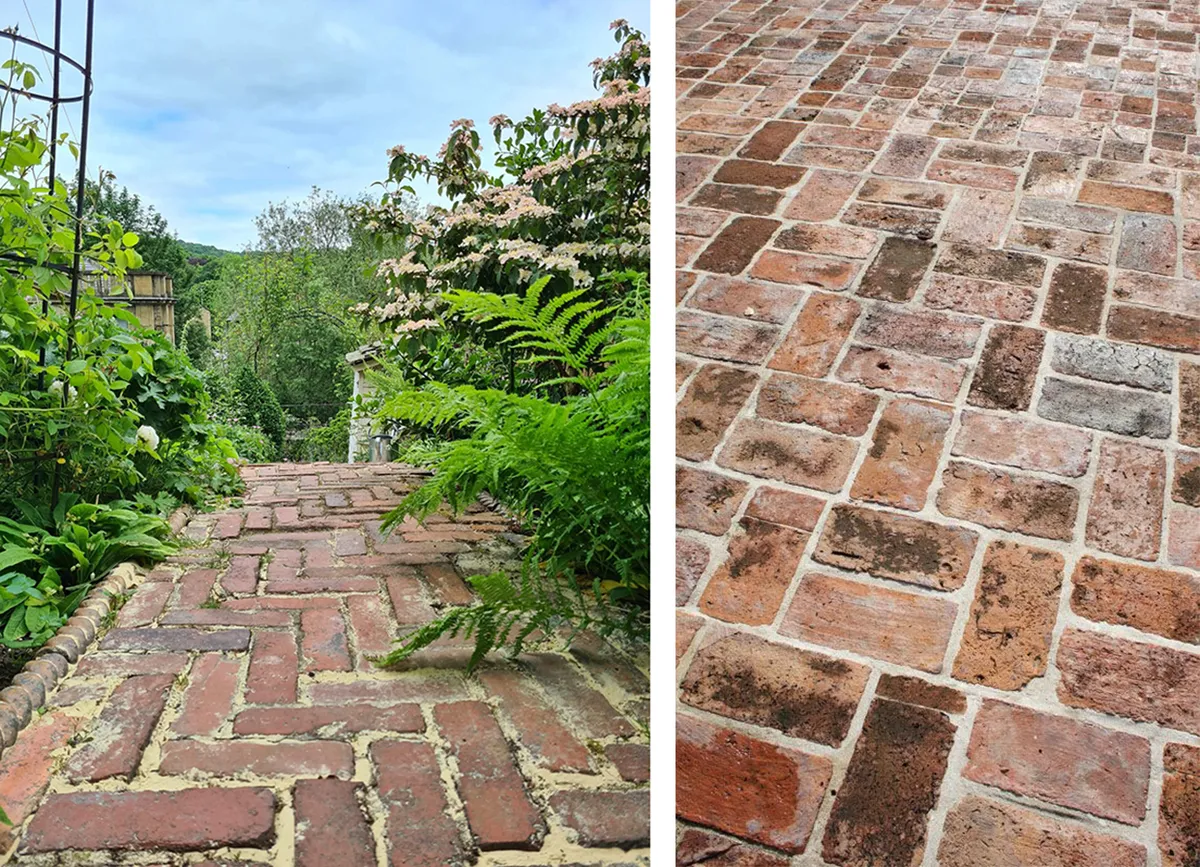
You don’t have to shell out for expensive slabs and stones when you make your own walkway. Standard masonry bricks can be used to create a wide range of cheap diy garden path ideas.
Reuse bricks you have hanging around, perhaps from an old garden wall that’s falling down or left over building supplies. If you don’t have any bricks yourself, you can pick them up (for a lot cheaper than buying new) from reclamation yards or online auction sites. Sometimes people will even give them away for free as you’re saving them on the cost of disposing of them.
Make sure your bricks are as free of cement or mortar as possible by chipping away at any with a chisel and hammer. You’ll also want to dig out the shape of your path first so that your bricks sit nicely and don’t stick up too much, and laying sand below and between the bricks will help them to stay in place.
Then comes the fun part, arranging your bricks in your preferred pattern. You could making your path in simple stripes or a crosshatch pattern, or get really fancy and make a herringbone pattern!
2. Make your own DIY flagstone walkway
Best for recycling
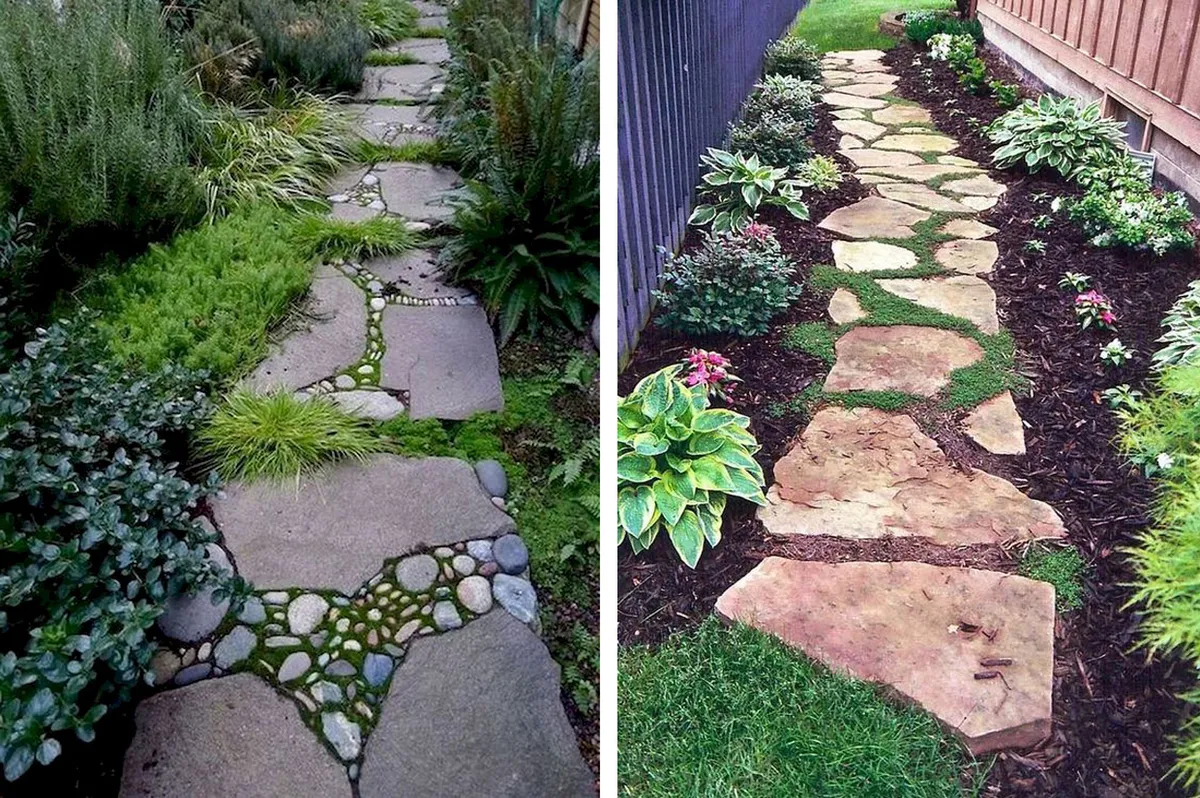
Most garden paths are typically constructed using paving slabs, and once they’ve been in place for a few years it’s not uncommon for them to get cracked and damaged. You could get some new slabs and replace them, but that all costs money (as well as the cost of disposing).
Instead, you could get creative with a sledgehammer! Put on your protective gloves and goggles and break those slabs up into a variety of shapes. Then you just need to arrange your slabs in an artistic layout.
The great thing about this is that you can customise the layout however you like. Leave large gaps between steps so that they act as stepping stones, or you could arrange them close together for a ‘crazy paving’ style. You can also try incorporating smaller stones or rocks into the gaps to add variety and different textures.
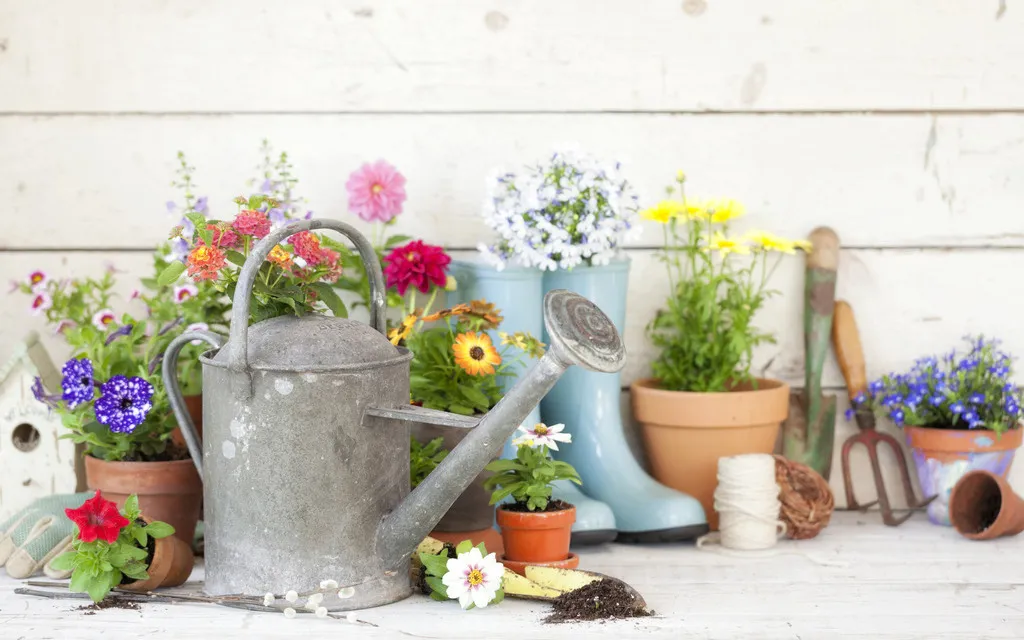
Inspired to give your garden a mini makeover?
You'll be wanting our garden decor ideas then! In this comprehensive round-up, learn how to upcycle a chair with macrame, make a plant stand, choose the right pizza oven for al fresco dining, and more!
3. Produce a path of pebbles
Best for making mosaics and patterned paths
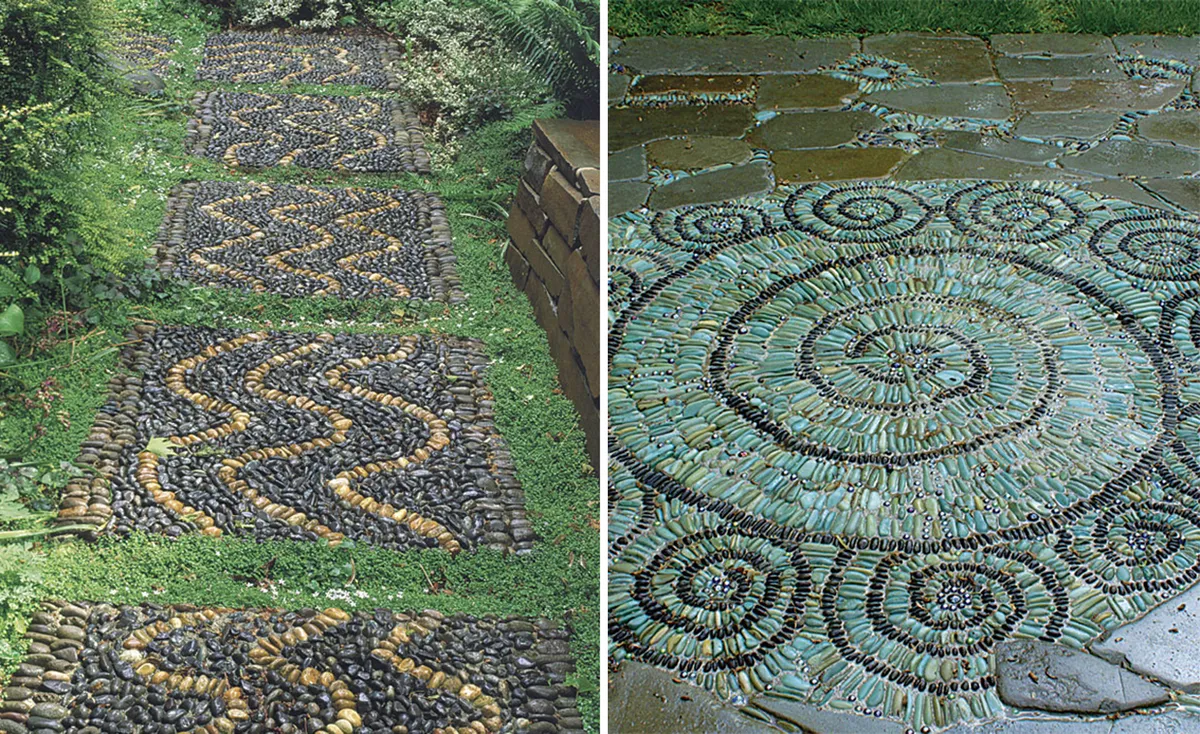
No paving slabs or bricks to hand? Have a go at using pebbles! While using smaller stones and pebbles will inevitably take a bit longer than using larger materials, you have a lot more space and scope for constructing detailed shapes.
You can approach it much as you would making a tile mosaic, using different sizes and colours of stones to create various patterns and areas. There are a few different ways you can approach making a stone pebble path. We’d definitely recommend drawing a plan or plotting your design in sand first, as once you start using mortar it’s a race against the clock before it sets.
4. Upcycle a pallet and walk the planks
Best for creating connecting walkways
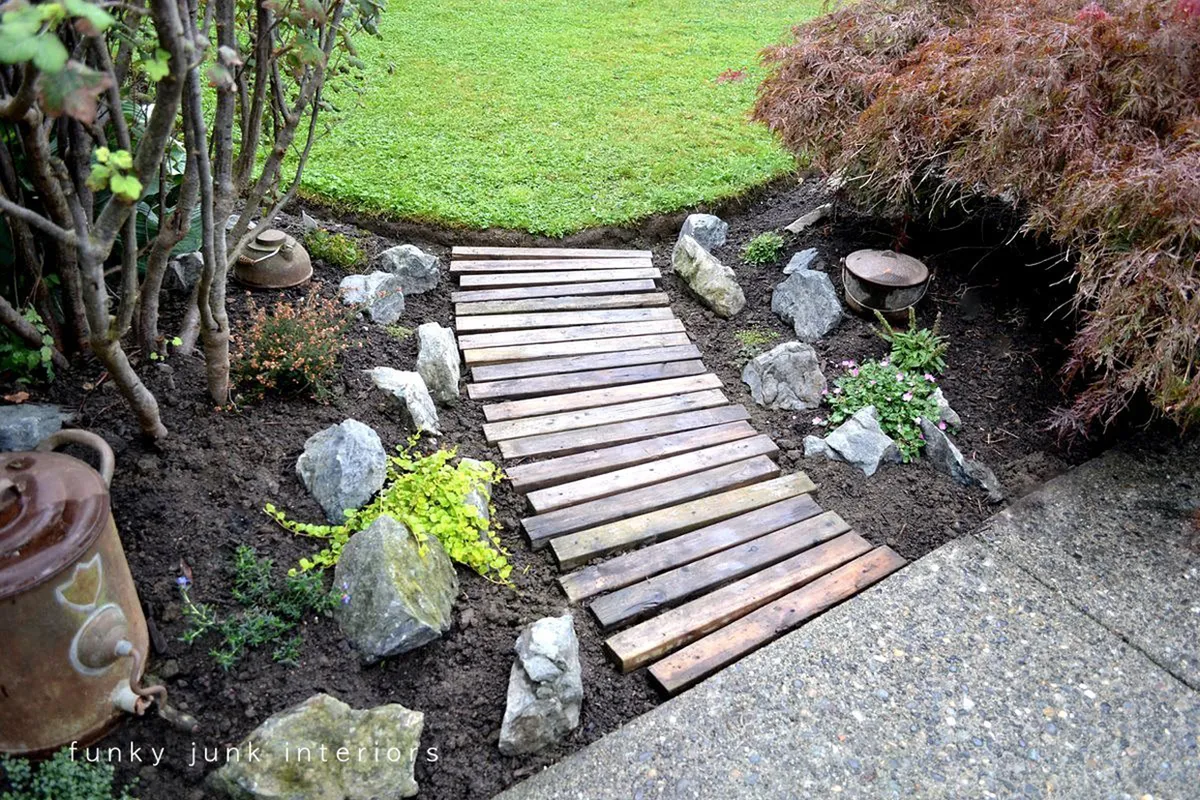
Sometimes you don’t need to make a long epic path, just a simple way of getting from point A to point B without getting your shoes dirty will do fine. This is especially so for large areas of planting where you still need to access specific areas.
Making a pallet wood walkway is a simple and quick DIY garden path project that you can make in no time at all. You can also cut your wood down to fit your required size, and using scrap pallet wood means it doesn’t have to cost you a penny!
Garden not big enough for a path?
If you’ve only got a small outside space with nowhere for a garden path to go, there’s still plenty of ways to get creative outdoors with our DIY small garden ideas.
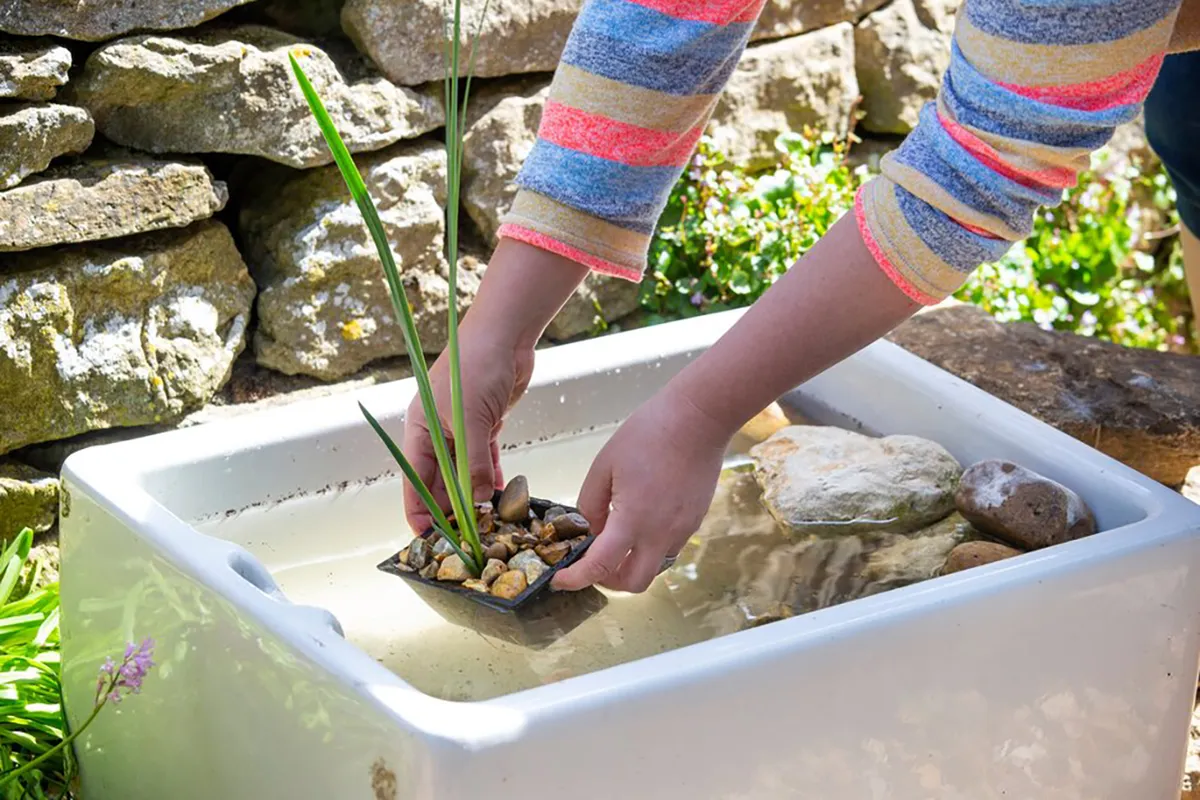
5. Build a path of bright buttons
Best for gardens for children
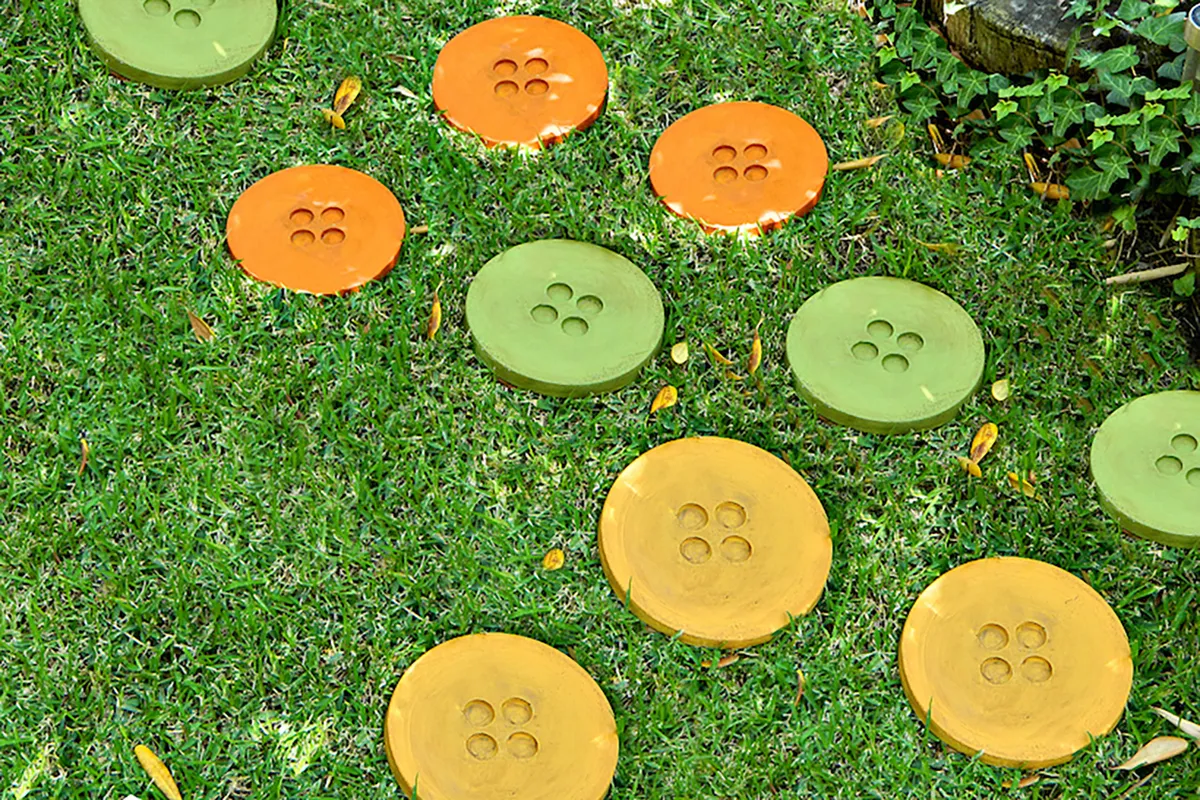
Little ones are forever running over flower beds, so here’s a crafty solution that will hopefully stop them in their tracks. Make those ‘keep off’ areas into a game with these fun button stepping stones. They look fab and are surprisingly easy to make yourself.
All you need are some plastic plates or containers to act as a mould, some bottle caps to make your button holes, and some quick-setting cement. Then just paint them in some bright colours and voila – big bold buttons that your kids will love hopping between.
6. Swap bricks and blocks for bottles
Best for recycling fans
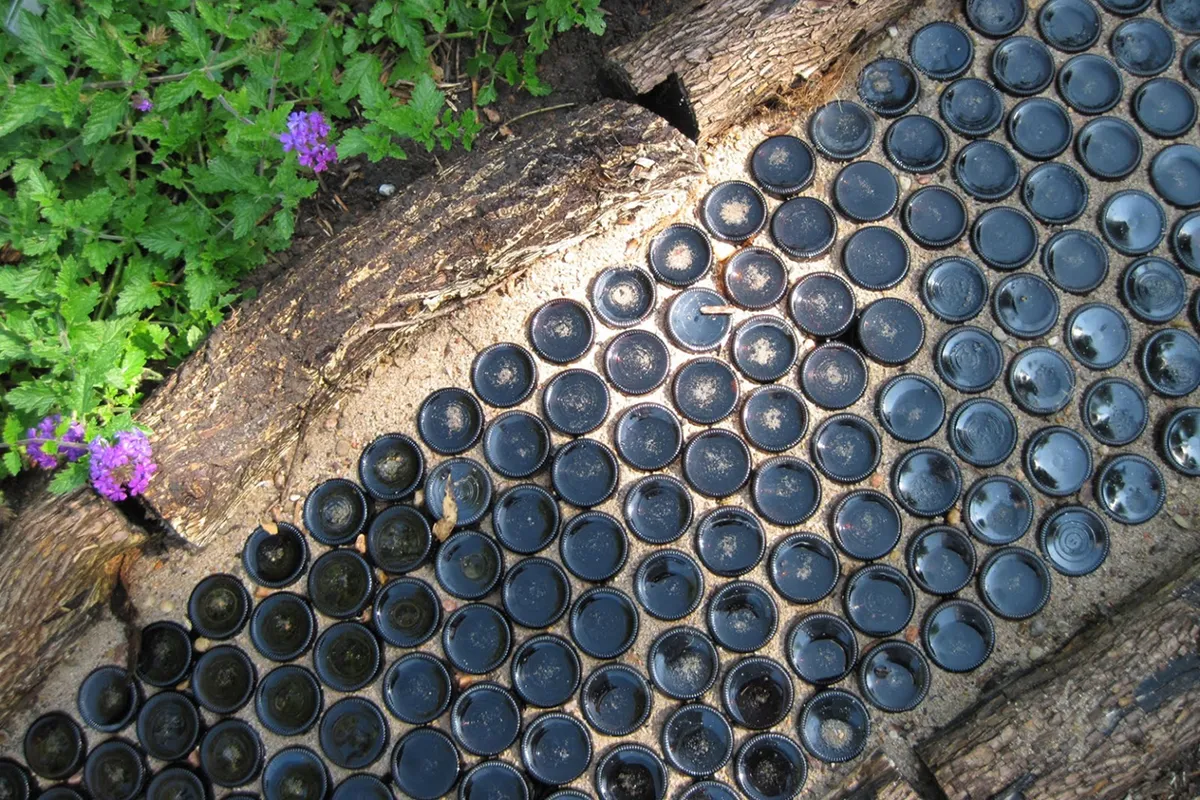
We’ve seen bottles used in a wide range of upcycling projects, but using them to create a DIY garden path is taking things to another level. Glass bottles can be amazingly strong when positioned correctly, making them a surprising and interesting construction material.
You’ll need to dig out a trench for your path so you’re able to almost completely submerge the bottles, then you use cement or mortar to fix them in place. The resulting paths have a fantastic shimmering effect. Yours can be made in whatever colours you fancy – time to raid the recycling bin.
7. We love a log round footpath
Best for a natural look
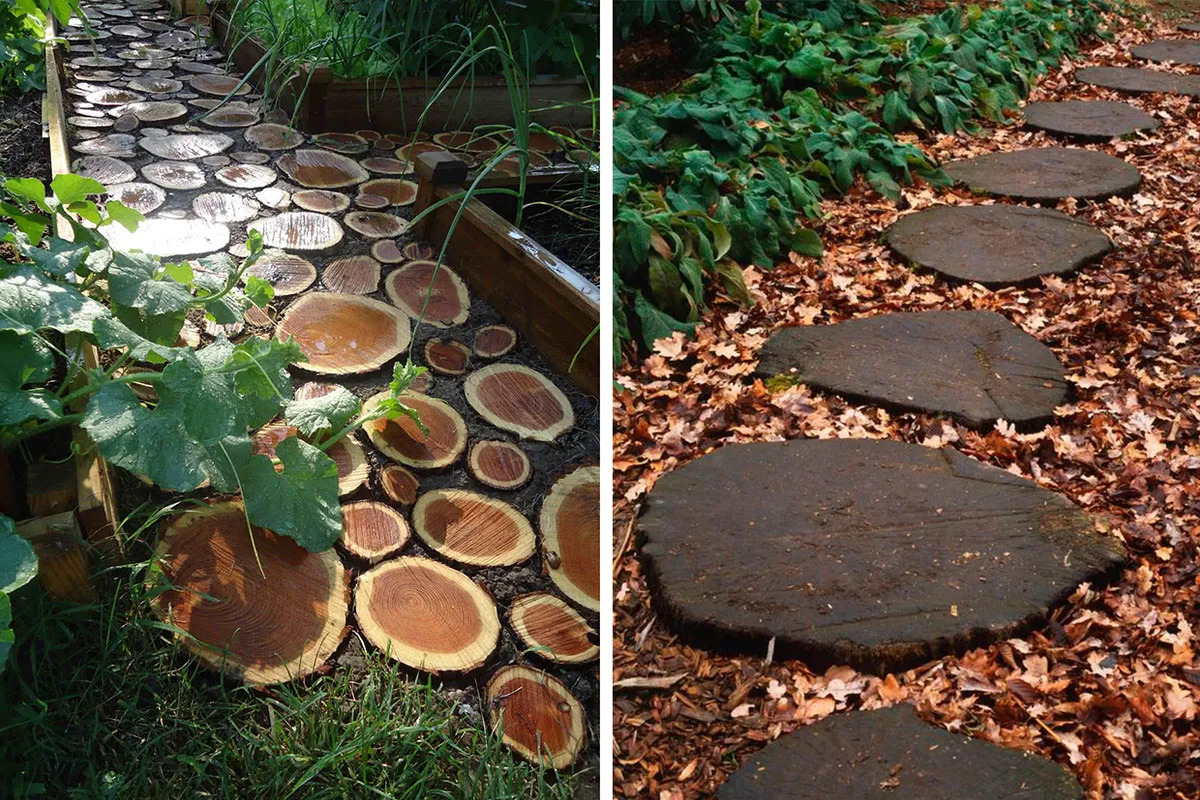
Create a DIY garden path that has a more natural feel to it by making one from log rounds! They look fantastic among raised beds or winding their way through planting areas as stepping stones.
You simply need a few logs, and either a chainsaw (and appropriate protective gear) or a regular saw and a lot of patience. Cut your logs into rounds that are an inch or two thick (the thicker they are the longer they’ll last). Using a chainsaw should give you a relatively rough cut which will help to make them less slippery when wet. If you’re using a hand saw you can just score some cuts with your saw into the rounds to help with this.
To make your logs to last even longer, you can protect them with an outdoor wood sealant. They look particularly lovely among woodchips, or you can also surround them with gravel or submerge them into the ground.
8. Make a mosaic path with broken tiles or crockery
Best for using up broken materials
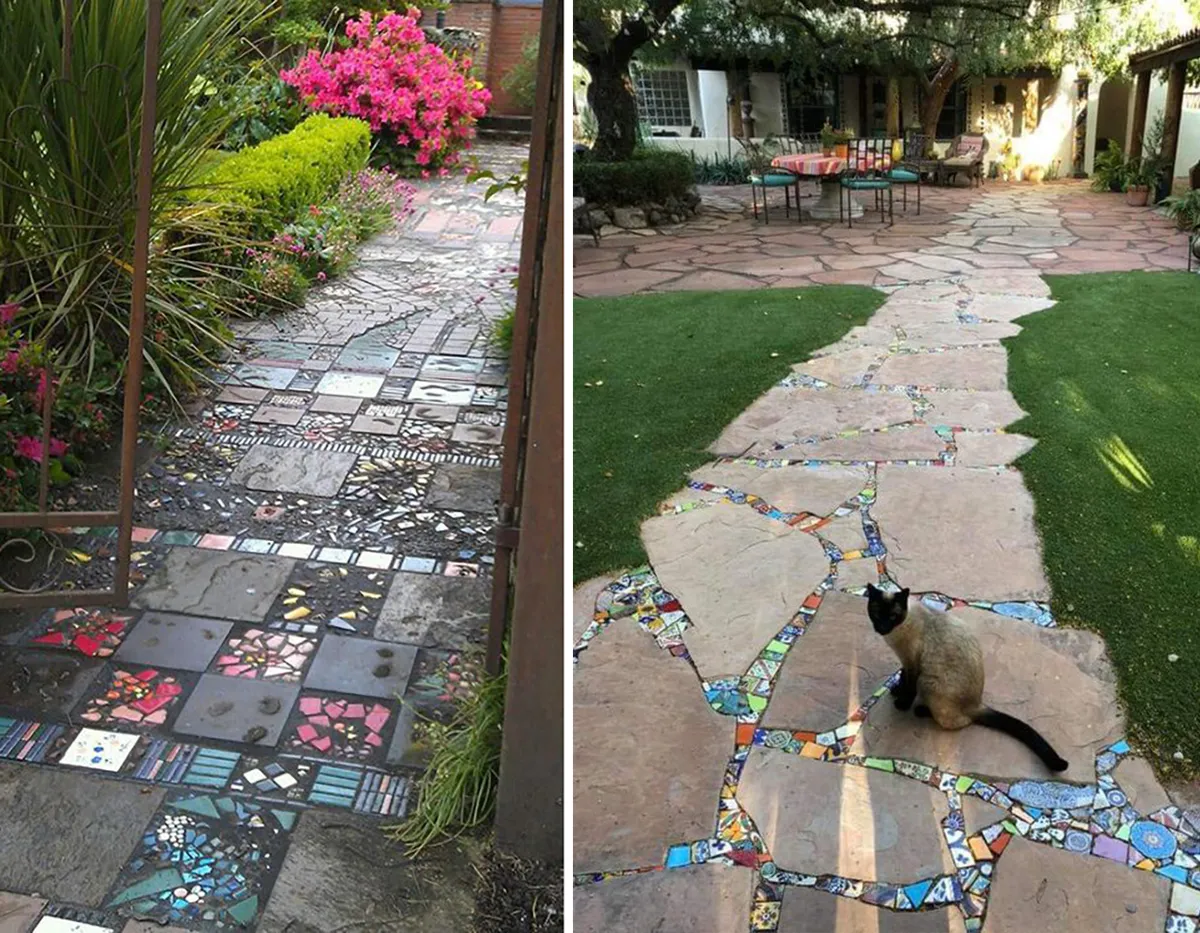
There’s one creative way of making a DIY garden path that goes way back to the Roman times – marvellous mosaics! You don’t have to go quite as intricate or make epic pictures of gladiators, you can just keep it abstract.
It’s a great project for if you’ve got a mix of tiles or any pieces left over from a kitchen or bathroom renovation. You can also use bits of broken crockery too, or even use a mix of materials like glass and pebbles to add even more colour and interest.
You don’t have to go huge with your mosaic either, it’s a fun technique to use for repairing a small area of an existing path. Remember that there are no rules when it comes to creativity, so don’t be afraid to experiment with different objects and shapes in your mosaics.
Choosing the right garden path design for you
While making your own DIY garden path is a great way of getting creative and saving money, it’s also important to bear in mind how your path will be used. If it’s going to be used by children or anyone with mobility issues then you need to ensure it’s safe.
Getting your path as level as possible is really important, so it’s worth doing regular checks with a spirit level and making sure you don’t have any elements that could cause a trip hazard.
Some materials such as wood can get very slippery when wet. Score them with a knife/saw or even scratch them with some coarse grit sandpaper. Anything that will add a bit of texture will help to improve grip.
When using tiles or other smooth materials, breaking them up into smaller pieces (which in turn means more areas of mortar/cement in between) should help reduce the chances of slipping on them.
Make a rock garden next to your path
Once you’ve decided on your favourite DIY garden path and are gathering materials, why not consider making a rock garden at the same time. You can find loads of inspiration in Gathered’s pick of the best DIY rock garden ideas.
